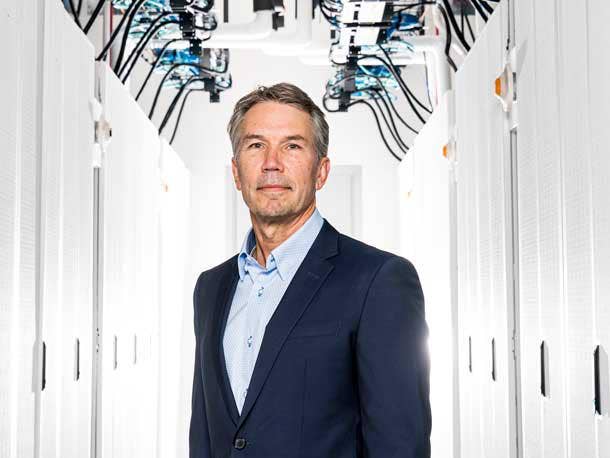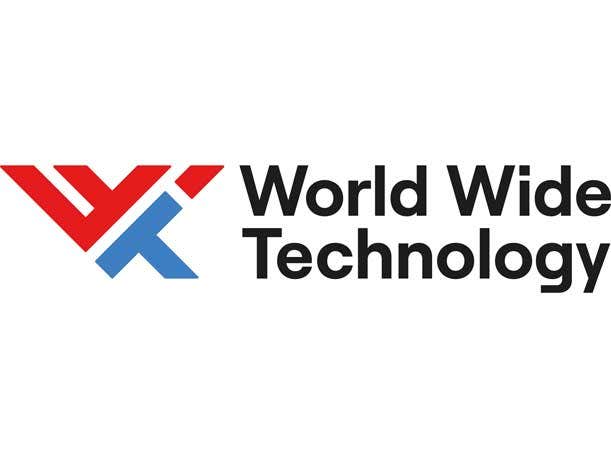WWT CEO On ‘Exciting’ AI Strategy, Cisco, Nvidia And 40 Percent Growth In 2023
World Wide Technology’s Jim Kavanaugh explains his $17 billion company’s massive sales growth in 2023 and WWT’s strategic moves around doubling down on AI.

When a $17 billion company grows revenue by 40 percent in 2023, the IT industry needs to sit up and take notice. IT channel superstar World Wide Technology (WWT) has been driving up to 40 percent sales growth across the board in 2023 with no plans of slowing down, thanks to a bold strategy created by CEO Jim Kavanaugh then executed by his 9,000-strong team.
“There were so many people and analysts projecting [at the end of 2022] that we’re going to have an economic recession this year, or we’re going to have a hard landing, or we’re going to have a soft landing,” said Kavanaugh in an interview with CRN.
“But we just continue to see solid activity this year. I truly believe that’s because of what we do. We provide significant value to these customers,” Kavanaugh said. “And that’s going to continue.”
[Related: Nvidia CEO On ‘Joining Forces’ With Google To ‘Reinvent Cloud’ For AI]
WWT is one of the largest partners in the world for Cisco, Dell Technologies, Pure Storage and Rubrik, as well as a top partner for Nvidia, Microsoft and Palo Alto Networks.
The St. Louis-based company has a global workforce of 9,000 employees, and growing, in more than 55 locations around the world. WWT has been recognized 12 years in a row by Fortune as one of the best places to work due to its leadership, innovation, and culture.
WWT’s AI Push In 2023
WWT has been doubling down on AI over the past several years. This year, the company launched a new composable AI lab within its prestigious Advanced Technology Center. Additionally, WWT won the 2023 Americas AI Solution Provider, Networking Partner of the Year award for Nvidia, one of the world’s most important AI chip providers.
“AI is a space that we feel very, very confident in our capabilities to provide a lot of value to our customers and our partners,” said Kavanaugh, who’s led WWT for more than 30 years. He has built a $17 billion IT giant from the ground up and survived countless market disruptions—everything from recessions and cloud computing to the global COVID-19 pandemic.
“In our collective space around IT in the channel, there’s so much opportunity here. IT used to be a back-office discussion where you kept the lights on for customers—not anymore,” said Kavanaugh. “IT, digital, AI—these are mainstream board level topics that are going to continue to really drive what companies do and what society does as we move forward.”
In an interview with CRN, Kavanaugh explains WWT’s winning sales strategy, his company’s future in AI and the vendors he’s betting on in 2023.

Are you bullish on the market in the second half of 2023 and what are you doing to capitalize on it?
We are actually bullish on the market overall in the second half. There’s a couple of soft spots. But, the first half of the year has been really strong.
We’re over 30 percent to 40 percent growth in the first half—top line and bottom line. I think we will be there, and then some, by the end of the year.
We’re having a very strong year. We see the activity continuing. Normally, you see a little bit of a slowdown, even in August, but things look good across our space.
The enterprise and commercial market that we go after: we’ve had good growth there. The large banks and financial industry: we’ve had good growth there, both domestically and globally. Public sector has been good—both state, local government and federal. We see good activity going into the government’s fiscal year end. Then hyperscalers have been strong also.
Probably the only area that’s been relatively weak has been service providers. So your traditional service providers. They’re scrutinizing budgets.
But overall business is very strong across the board. We continue to see good activity going into the second half.

You’re a $17 billion company. That 30 percent to 40 percent growth in 2023 is larger than most of the world’s market leaders. How is WWT doing it?
There’s no embellishment on that number. I’m actually being conservative. We continue to see good activity and good growth both on what I would say: off-the-shelf traditional business, value-added reseller (VAR), systems integration (SI); as well as our services business that is growing faster than our traditional VAR and SI work.
So we’re bringing the services together in a very complementary way—whether that’s software development, strategic resourcing, application development, automation, core networking, data center, or looking at just the traditional services. Also, we continue to evolve around our digital strategy.
We’re obviously in the very, very early stages of what’s going to come around AI.
That’s a space that we have made pretty significant investment over the last eight to ten years in our big Data Science Group which I think puts us in a very strong position, along with our software development and our management consulting group, to come in and help clients really think through and advise them in regards to how they’re going to approach AI infrastructure. I think there’s multiple phases of this.

What are you helping customers with around AI? What are they missing that WWT is providing?
A lot of organizations haven’t really been deeply thinking about purpose-built AI platforms and how they’re going to build out their infrastructure around AI—whether it’s a purpose built AI platform, or they’re going to do it in the cloud with Azure, ChatGPT, Google, whoever.
I believe for a lot of them, it’s going to be a hybrid approach. Especially for large organizations that are hypersensitive around data and data at rest. Where is that data?
We put a lot of thought into, ‘What are you trying to do with AI? What specific functions are you trying to automate? How are you trying to scale up your business?’ Then we discuss, ‘How do you do that in a very scalable way and a very controlled and governed way, from a security standpoint?’
That space is really evolving quickly when you’re talking about large language models, generative AI, small language models, more custom AI platforms and software. It’s not going to be a one size that fits all. That’s just not the way it’s going to work. As we continue to move forward and collaborate with a number of software and hardware partners, that is proving out to be the case.

Name a couple of WWT’s vendor partners that excite you in 2023.
Our big partners like Dell, Cisco and Microsoft continue to be extremely important to us. We continue to invest significantly in those partnerships.
Obviously, those start with Cisco. We just have an incredible partnership with Cisco everywhere from: my relationship with [CEO] Chuck [Robbins] to executives, to alignment.
That being said, there’s a lot of interesting things that all companies are trying to do in regards to AI. So there’s initiatives that we have in place collaborating with Cisco in regards to: where are they going? Where can we help? And how do we collaborate?
Then you look at security which is an exciting space. Cisco is making strong inroads in the security space. It’s going to be interesting to see how that continues to evolve and play out because they’ve put a lot of time and effort into security. You look at Palo Alto [Networks] and CrowdStrike, some really strong companies out there that provide deep capabilities.
We also have deep partnerships with Dell EMC. We’re still sorting through exactly how the VMware play is going to work with Broadcom as we move forward.
We’re also working with a number of exciting startup companies. A lot of them are just names that I wouldn’t communicate at this time, but we have a really, really strong ecosystem of early-stage companies that we’re working with in our labs in a pretty significant way from a collaboration standpoint—sharing ideas, thoughts and innovation.

WWT opened a new composable AI lab inside your Advanced Technology Center. How big of a sales opportunity is this?
Because of our experience that we have with all the traditional compute players such as IBM, Dell, HPE, AMD, Intel and Nvidia— Nvidia has taken a world by storm around the GPUs and the things that they’re doing around AI—all of that will help our AI lab be successful.
There’s a number of things that customers are going to need help trying to sort through like: how is storage going to be integrated into the rack? Is all this AI going to be done in the cloud or on-premise in a client environment? Are you going to use one of the large providers’ AI platforms in the cloud? Or do they look at some of the open-source capabilities that are presenting themselves?
Then there’s also networking aspects as you see things that Nvidia is doing around their GPU-based and their networking InfiniBand [platform] versus an Ethernet-based approach, which would be more of the Cisco’s, Arista’s and Juniper’s. etc.
We’re building out those platforms in our labs today. We’ve had many of those platforms in our labs that we have been working with for the last several years.
So we continue to iterate on those platforms to give customers access and advice in regards to what they should be thinking about and doing to build out their own purpose built AI platforms.
So there’s a lot going on there and we’re just excited to be right in the middle of it. We’re spending a lot of time, not just having those relationships, but really the deep expertise around the hardware, the software, the infrastructure, and the data scientists and software developers that have been collaborating with our collective teams in our labs and working with our customers and our OEMs on these efforts.
AI is a space that we feel very, very confident in our capabilities to provide a lot of value to our customers and our partners.